At a recent rail industry press round table, Network Rail’s Chief Executive Andrew Haines hit out at those complaining about the Integrated Rail Plan (IRP). He felt they had done the industry “an enormous disservice with the Treasury, when the economics of the railway are really challenging,” and that “the rhetoric that has developed around the IRP nationally has been profoundly unhelpful, imbalanced and wrong.”
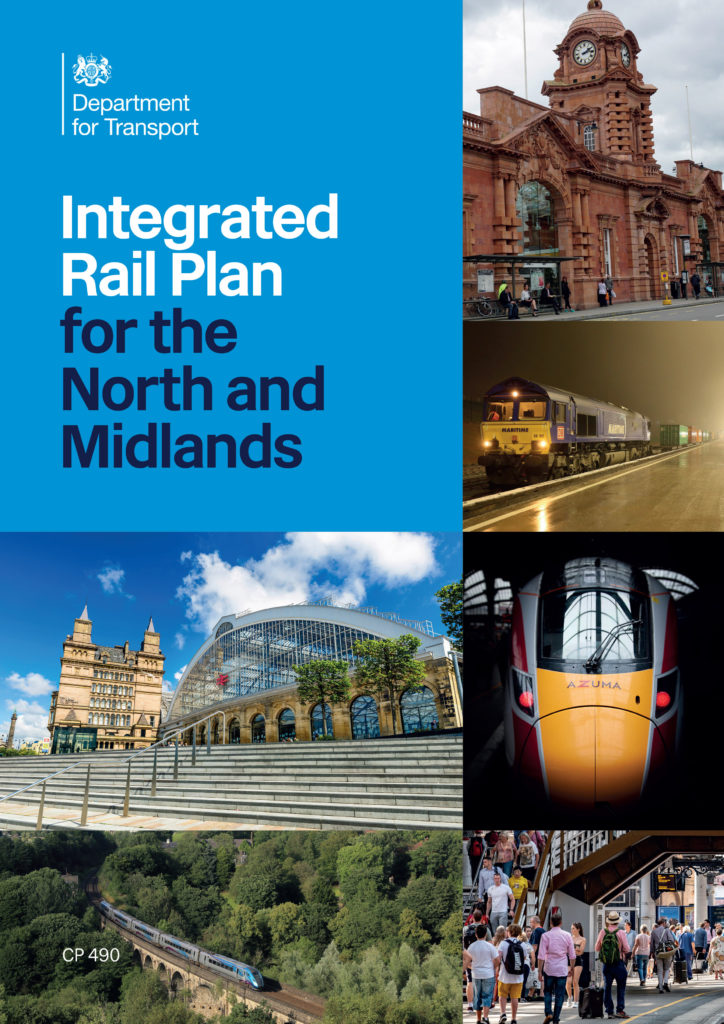
the congestion through
Manchester’s Castlefield
corridor. The IRP has no
plans to address this.
He had a point as the IRP package represents an enormous sum of money and the realpolitik is such that it is not helpful to criticise those holding the purse strings. Yet are such criticisms wrong? To find out we looked at the written evidence submitted to the Commons Transport Select Committee’s IRP inquiry which comprises 100 submissions. For this feature, we analysed about 20 of these from the cities affected, industry bodies, independent experts, and the Department for Transport (DfT).
IRP
The IRP package of rail investment is valued at £96 billion, of which £42 billion had been previously announced. This compares with £185 billion that the National Infrastructure Commission (NIC) felt was required to deliver the proposed major rail schemes in the North and Midlands, which included a Northern Powerhouse Rail (NPR) high-speed line from Manchester to Leeds via Bradford and HS2’s Eastern Leg to Leeds (HS2E). Despite recent commitments by the Prime Minister, the IRP considers that these lines are not required and that similar benefits can be obtained by part-building them or upgrading existing lines.
This view is rejected by all the affected city authorities including East Midlands and Manchester where the IRP offers significant benefits. The Rail Delivery Group (RDG) considers that: “government risks not adequately increasing capacity and releasing space on the current network to drive long term economic growth and achieve wider government goals.” The view of the Railway Industry Association (RIA) is that: “it is difficult to see the IRP as anything other than a piecemeal approach to national strategic railway planning. The IRP risks reducing the economic benefits the previous plans for HS2 and NPR in full would have brought.”
Value for money
Although £96 billion is a large sum, the benefits from the schemes cancelled by the IRP were equally significant. Studies undertaken for Transport for the North (TfN) show that, at 2060 prices, their preferred network would deliver an additional £14.4 billion in gross value added (GVA) a year, including £5 billion from increased business agglomeration, to create over 129,000 new jobs across the UK, 73,000 of which will be in the North.
The IRP cancels the £18 billion NPR high-speed line between Manchester and Leeds via Bradford which the city considered could generate £3 billion additional annual GVA and create 27,000 additional jobs by 2060.
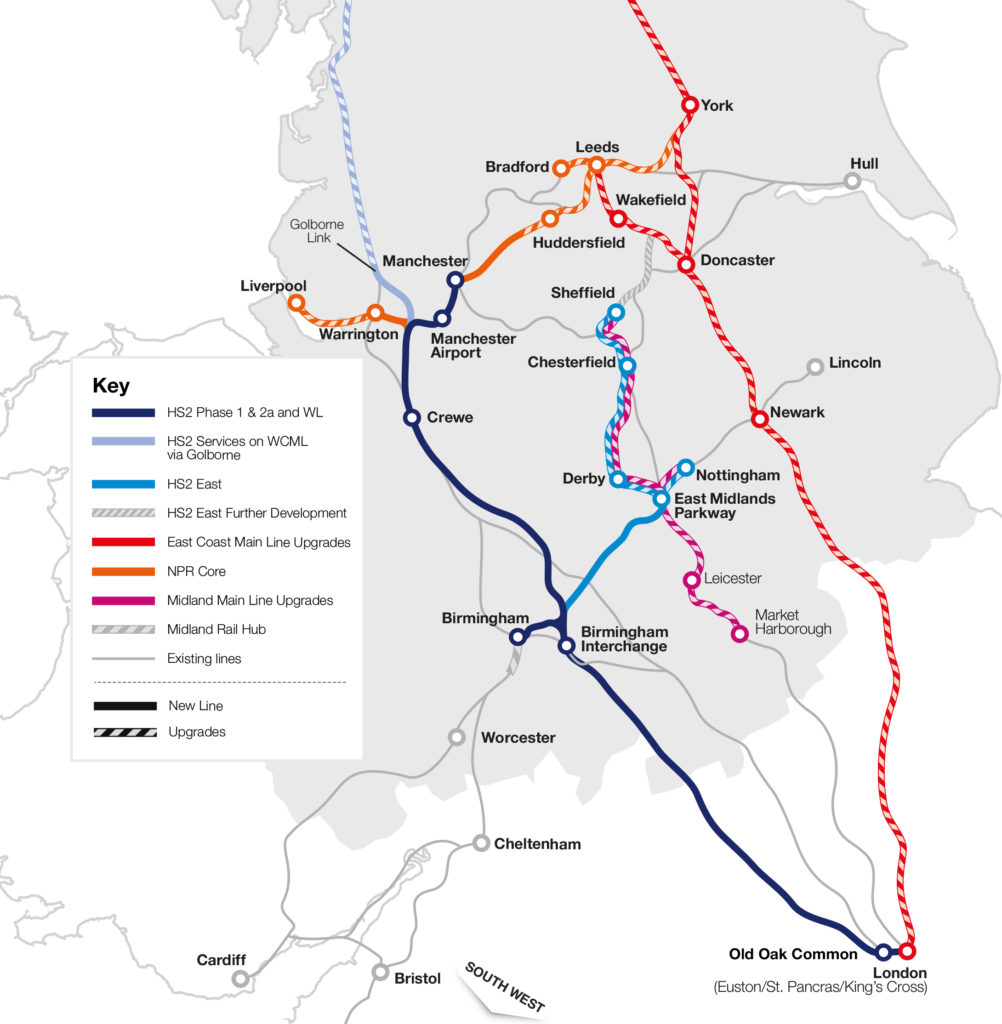
The submission from Leeds City Council notes that HS2E has a stronger economic case than the western branch, with a Benefit Cost Ratio (BCR) of 5.6 reported for the HS2E, compared with 2.6 for the western leg. HS2 and the DfT identified that HS2E generated approximately 70% of the benefits for the whole high-speed network. Abandoning the HS2 line to Leeds therefore significantly reduces the overall benefit from HS2. East Midlands Councils note that previous assessments of HS2 indicated that its full benefits would only be realised when the ‘Y’ Network is delivered in full and that there has been no published assessment of the business case for the IRP’s truncated HS2 network.
The IRP does nothing to address the poor train service between Leeds and Sheffield and so limits their future agglomeration. These city regions support two million jobs and form one of the three biggest regional economies in the UK outside London. With five million people, their combined economies generate £96 billion GVA with 175,000 businesses and 11 universities.
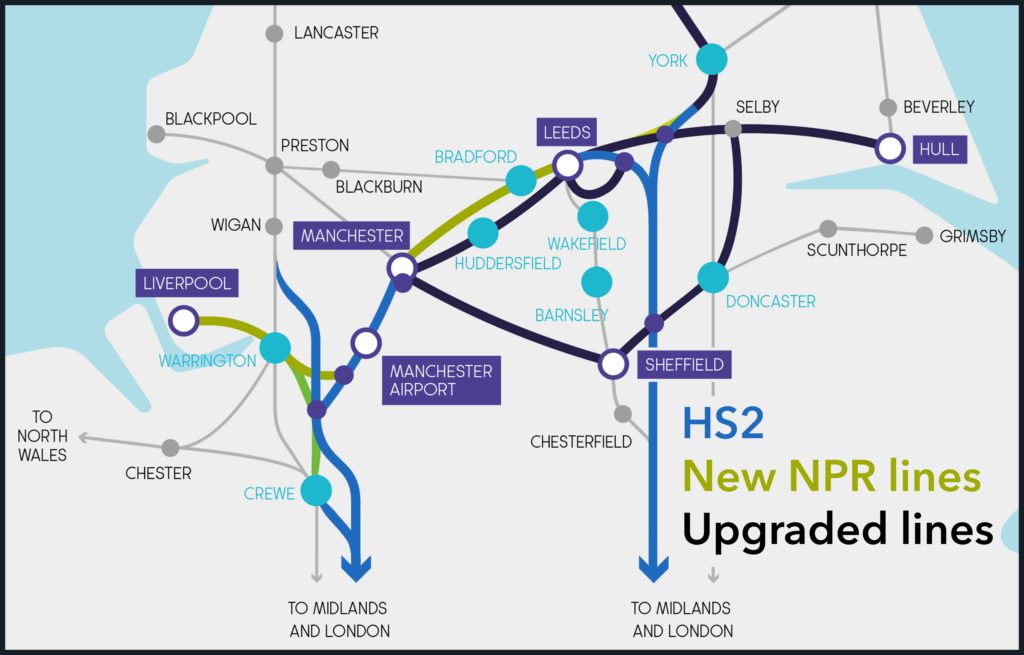
RIA shows that the rail sector is an economic catalyst with reference to the 2021 Oxford Economics report that they commissioned showing that for every £1 spent in rail, £2.50 of income is generated in the wider economy. The City of Bradford make the point that rather than just accepting high HS2 costs, the IRP could have been expected to deliver cost savings by challenging over specification, and Government contingency and risk allocation.
The above shows that, while the IRP will clearly cost less than previous proposals, the extent to which it represents better value for money remains unclear.
Levelling up
The IRP is claimed to support the Government’s levelling up agenda. For example, the submission by the DfT claims that: “under the previous plans, enormous sums would have been invested in improving journeys taken by relatively few people – meaning far smaller sums would have been available to improve local services used by the vast majority.” This false statement ignores the large numbers of people that long, frequent, high-speed trains can carry, the journey opportunities new high-speed lines could have provided, and the capacity they could have released on local lines.
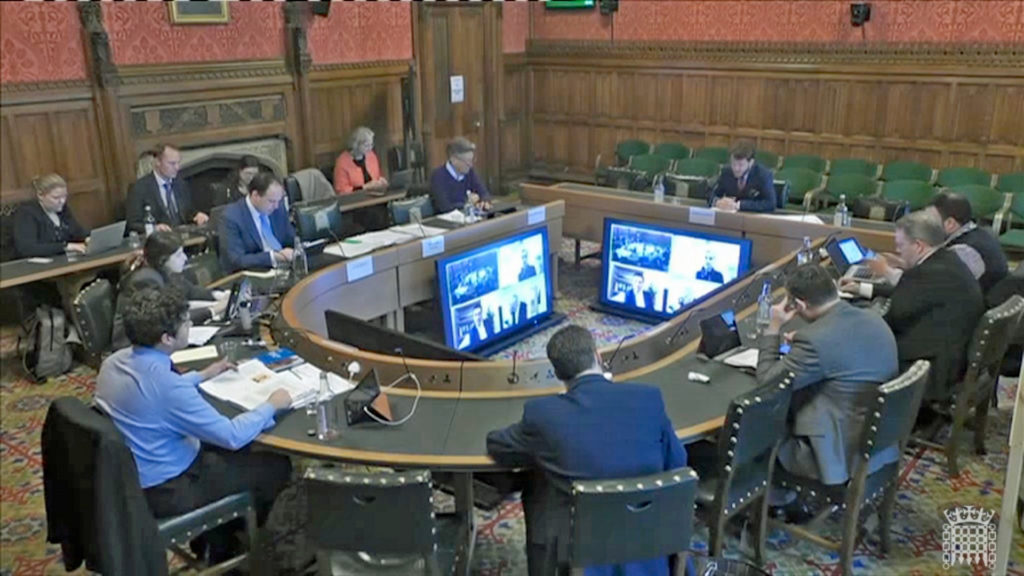
Submissions by William Barter and Gareth Dennis illustrate these points. Barter notes the IRP ignores opportunities to travel Northwards from locations other than London. In this respect, HS2E and its Toton East Midlands Hub station could have acted as a railhead for large parts of the South and East Midlands whose journey opportunities to Yorkshire and the Northeast are currently slow.
He also explains why running HS2’s high-speed trains directly to Derby and Nottingham stations must significantly reduce the number of through trains to these cities from Leicester. However, one benefit that this provides is released capacity on the Midland Main Line (MML) which could improve local services to London, which is hardly levelling up.
Dennis contrasts the rail services from Shenfield in Essex with those of three Northern towns that could have seen more services from capacity released from new high-speed lines. Shenfield is 20 miles from London, has a population of 10,500, and a service of 10 trains per hour. Outwood (population 7,600), Marsden (3,500), and Belper (20,500) currently have only two trains per hour and are on lines that NPR and HS2E would have by-passed. Instead, the IPR proposes to run more express services through these towns which removes the levelling up opportunity to improve their train service.
Other responses also explain why the IRP does not deliver levelling up. The South Yorkshire Mayoral Combined Authority (SYMCA) consider that the IRP favours investment in the most productive parts of the North and so is counter to the Government’s levelling up ambition. The RDG also considers that the IRP puts at risk Government delivery of policies to level up the regions and reaching net-zero by 2050.
Capacity and connectivity
The North has a Victorian legacy of a predominantly two-track railway with much sharply-curved track and frequent flat junctions that must accommodate competing and differing needs of long-distance, regional, local, and freight services. On such a network, increasing the speed of some services without additional investment in capacity will result in a less reliable infrastructure with lower capacity. As Barter puts it: “increasing the speed of the fastest trains on a mixed-use route is immensely destructive of capacity.”
He is one of many respondents who emphasise the capacity benefits of segregated high-speed lines where all trains travel at the same speed. RIA also points out that route capacity will always be limited by different types of trains having to share the same track, and considers that there are industry concerns about whether the necessary paths can be made available on a mixed traffic railway to deliver the IRP’s claimed capacity benefits.
In its response, the DfT is alone in failing to fully acknowledge this capacity benefit of segregated high-speed lines which the Department considers to be only true “in abstract” as other factors might prevent theoretically available capacity from being used.
As the IRP has much greater interaction with the existing rail network than the original NPR and HS2E proposals, it is likely to require additional capacity enhancements. Evidence submitted to the Transport Committee’s inquiry identified the following specific constraints:
Retaining Bradford Interchange station significantly restricts future service growth as the station is a terminus with reversal of through trains creating an exponential increase in timetable conflicts as services increase.
Leeds station has consistently been the busiest in the North of England and is very close to capacity. HS2E services would have used a T-shaped extension to the station. If longer long-distance trains cannot be accommodated at Leeds station, it will not be possible to increase local services.
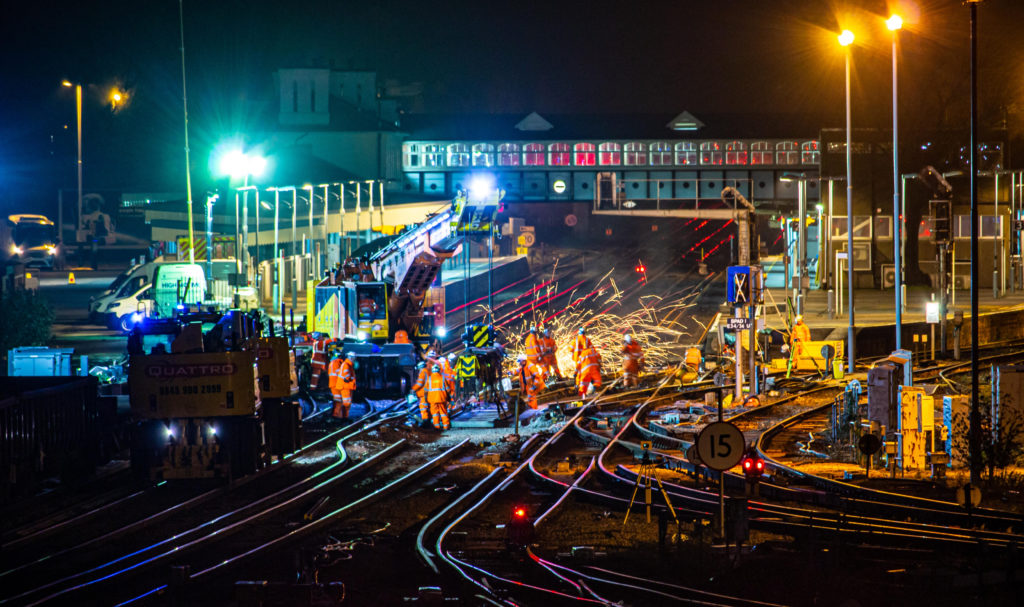
The IRP proposes running high-speed trains to Derby and Nottingham over the constrained and congested existing rail network north of East Midlands Parkway.
The IRP offers no solution for the congested Castlefield Corridor in central Manchester for which additional infrastructure is urgently needed.
The HS2 surface station design for Manchester has no spare capacity when built so will only be able to operate successfully if no perturbation or other unforeseen delays occur.
Although the Government claims the new IRP will deliver faster or similar journeys to the original HS2 and Leeds-Manchester proposals of the 28 journeys listed in the Plan, journey times would only be improved for five of these routes, they would remain similar for four, and would be worsened for 19 routes.
Furthermore, claims that an East Coast Main Line upgrade could reduce current London to Leeds journey time from 133 to 113 minutes are considered by Leeds Council to be “not supported by evidence and appear optimistic.” Barter is one of many who consider that this reduced journey time is not credible, except at the expense of stops at intermediate stations.
Disruption
The IRP proposes that instead of HS2E, Leeds will benefit from improved services on an upgraded East Coast Mainline Line (ECML) and states that the disruption from this upgrade would be less than building HS2 due to the number of affected motorways. Neither the IRP, nor the DfT’s evidence refers to the 2017 Network Rail study ‘Options for Potential Capacity and Connectivity Enhancements to the Existing Network’, mentioned in the Leeds response. This study assessed disruption from work to enhance existing lines to provide a step-change in capacity as a potential alternative to the full HS2 network.
It concluded that this would require around 4,400 long weekend possessions, mainly on the ECML and West Coast Main Line (WCML). Say 1,800 such possessions on the ECML would be required to upgrade it to offer the capacity offered by HS2E, with three such possessions every weekend, this would require over 10 years of continuous weekend ECML closures. This highlights the limitations of upgrading existing lines and indicates that the IRP’s ECML proposals are not deliverable.
It also demonstrates why, to deliver the same capacity, it is less expensive to build new lines as the cost of contractors working at weekends only with significant set up times, must be significantly more expensive than having continuous site access.
The Leeds submission stresses that it will be crucial to understand the level of disruption caused to passengers and freight which could suffer decades of weekend disruption. With IRP proposing significant works to existing Transpennine, ECML, and MML routes, passengers reaching Leeds from most directions will be subject to disruption.
Transport for the North (TfN) considers that upgrades often underestimate the cost and time required. They feel that the lessons learnt from the WCML upgrade must not be forgotten as this was the railway equivalent of attempting “open heart surgery whilst trying to keep the trains running.”
It is perverse that the IRP and DfT have ignored the 2017 study which was commissioned specifically to assess disruption from required enhancements should HS2, or a part of it, be cancelled. It indicates that the magnitude of the disruption and thus the cost of the IRP’s proposals is not understood.
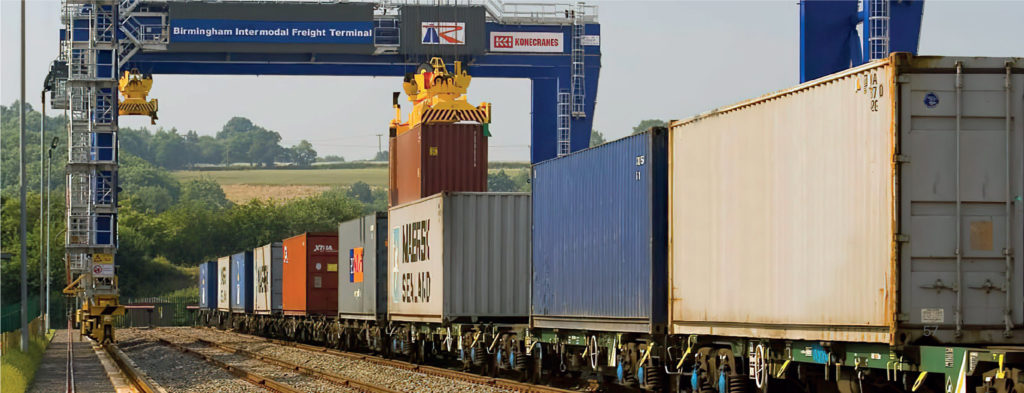
Freight
The Rail Freight Group (RFG) welcomed some aspects of the IRP such as gauge clearance and electrification of the Transpennine route. MML electrification was also welcomed though the RFG considered the exclusion of the freight route between Corby and Syston Junction, and the Erewash Valley line, to be a missed opportunity.
The RDG also welcomes the IRP’s electrification proposals but was concerned that the IRP may create new bottlenecks where HS2E or NPR services will operate on the existing network, for example in the East Midlands where HS2 trains will re-join the existing network which is an important freight route. They also felt that HS2E could have created a substantial increase in capacity for rail freight in the UK and that the lack of such high-speed lines puts a ceiling on rail freight growth.
RIA considered that the IRP is unlikely to provide the necessary capacity for freight while ASLEF makes the point that for freight, line capacity is vital as freight trains are typically longer, heavier, and therefore slower than passenger trains. Hence, any plans which increase speed but not capacity will have a negative impact on the amount of freight that can be moved by rail. The Institution of Civil Engineers (ICE) was also concerned that the lack of electrification has significant implications for freight operators. An example of how the IRP impacts on the wider rail network is that Anglo-Scottish rail freight will be constrained by the IRP’s cancellation of HS2E as this will increase WCML Anglo-Scottish passenger traffic and so constrain additional rail freight through Carlisle.
The DfT considers that the IRP will increase rail freight capacity with reference to capacity created by the IRP’s new lines west of the Pennines and the Transpennine upgrade. Their response did not consider the Midland or East Coast routes.
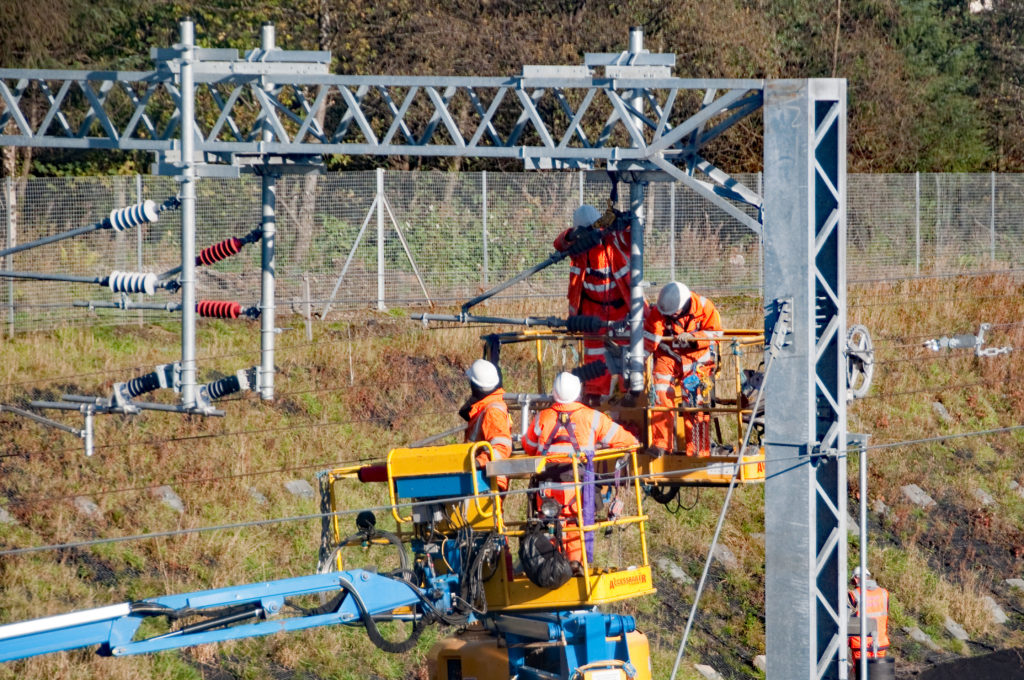
Decarbonisation and electrification
Accommodating modal shift from less carbon-friendly transport modes is potentially rail’s greatest contribution to UK decarbonisation. In its claim that the IRP offers more rail freight capacity, the DfT recognises that such modal shift is a key part of its decarbonisation strategy, though it does not mention passenger modal shift. The RMT considers that there must be a significant increase in rail investment if the UK is to meet its carbon reduction targets.
In his evidence, Dennis quotes the Climate Change Committee which considers that rail needs to increase its capacity to absorb freight and passenger modal shift from road and air transport. He notes that high-speed rail provides the required step change in capacity particularly through released capacity on existing lines.
Although the IRP will electrify the Transpennine and MML routes, the ICE is concerned that the IRP’s lack of focus on electrification will leave many busy passenger and freight lines unelectrified. Both the RDG and RIA share this concern. RIA notes that just 500 route miles of electrification would enable about 70% of UK rail freight to be electrically hauled. As well as delivering rail decarbonisation, more powerful electric trains have faster acceleration. This increases route capacity by minimising speed differentials, particularly between freight and passenger trains.
Wasted planning
In its response, the DfT states that the effects of the “pandemic cannot be ignored and so we must not rigidly stick to plans drawn up 10 years ago.” This response does not take account of the need to accommodate modal shift, or of the likely increase in rail demand if car travel is taxed by the mile, as it surely must be as the use of battery powered cars increases. Moreover, the UK’s economic geography has not changed.
Thus, the pandemic is not a reason to scale back previously promised schemes. Responses submitted to the IRP inquiry show how the IRP’s abrupt departure throws regional plans into disarray and wastes years of planning work. Leeds explains how, over 10 years, significant work has been done to plan the city around HS2 in partnership with DfT, HS2, Network Rail and others. The IRP has ignored this work and it is not clear how much land will be required for its proposals. Instead, a further study on how HS2 trains can come to Leeds is promised which introduces years of further delay and uncertainty.
The SYMCA is also concerned that the IRP undervalues the level of joint working that has been undertaken over 10 years between its constituent councils, the DfT, HS2 Ltd and TfN on technical proposals and growth strategies for NPR and HS2 in South Yorkshire. In the East Midlands, considerable sums have been wasted on studies to agree and develop the location of the HS2 station at Toton.
RIA contrasts the significant amount of rail industry planning for HS2 and NPR with the IRP’s decisions which were taken with little industry engagement. The Association is concerned that the uncertainty from this lack of transparent decision-making harms the supply chain’s ability to deliver at good value to the taxpayer as rail businesses need the confidence to invest in the skills, training, and capability to deliver complex rail projects.
The IRP’s lack of integrated planning indicates that there are likely to be costly unidentified issues associated with its proposals.
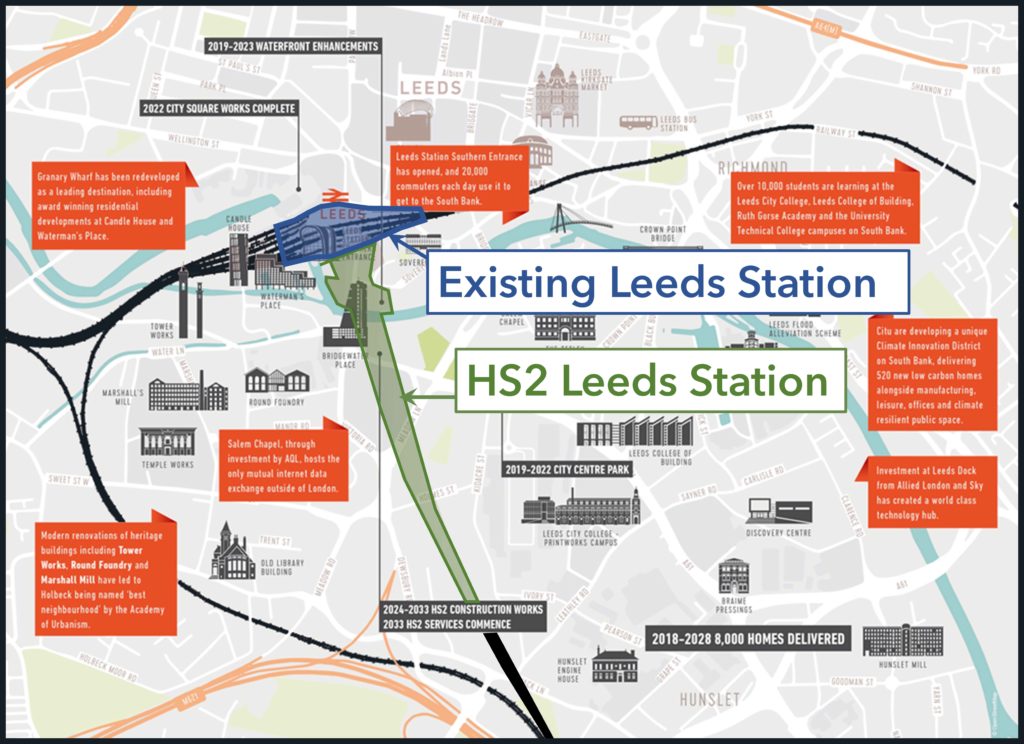
The verdict
An assessment of the evidence submitted to the Transport Committee’s IRP inquiry shows that, while The IRP offers a large railway funding package to deliver some worthwhile projects, it also has some significant flaws and makes various false claims.
Despite this, Haines is right to point out that the industry should not be seen to be ungrateful for the IRP. Moreover, it is clear the Government does not trust the industry to deliver at an acceptable price due to, for example, recent electrification schemes and HS2 cost increases. Demanding more money in such circumstances could be counter-productive, especially after Government has spent billions of pounds to support the industry during the Covid crisis.
Yet this should not be seen as money for the railway as the beneficiaries of the IRP are the people of the North of England who have suffered from a historic lack of transport investment. Evidence from its regions show how large-scale rail investment could be transformational and that the IRP’s curtailment of the previously promised NPR and HS2E high-speed lines prevents regions from fulfilling their huge economic potential and thus significantly limits the educational and employment opportunities of millions in the North of England.
It is to be hoped that the Transport Committee’s IRP inquiry recognises this reality as a first step to reinstating the IRP’s cutbacks.

